Tips on Effective CV Design and Writing
Some companies receive hundreds of applications per day. How can you increase the chances of your CV getting noticed?
July 17, 2020 - 10 min read
I've had the opportunity to work with recruiters in my career. I've taken numerous interviewer trainings, done interviews and been to a broad range of company recruitment events including events in universities. In addition to that, I get 3-5 messages on LinkedIn per day from rectuiters hiring for various companies. I talk with some of them even if I'm not interested in the job to understand what they like about my CV. This allows me to create a feedback loop where I can learn more about what attracts them.
Long story short, I have some understanding of what recruiters want on a CV. Here are several tips to all beginners out there:
1. Spend Time on Your Formatting and Design
Let's do a blind test. I've used my old and new CVs and applied a blur filter on top of them. The purpose of this is to view the CV's from the perspective of a recruiter. Initially they spend very little time looking at your CV and all they see is a blurry glimpse of the formatting.
You receive these two CVs at the same time. You have 20 seconds to pick one. Which one would you pick based on the intitial look?
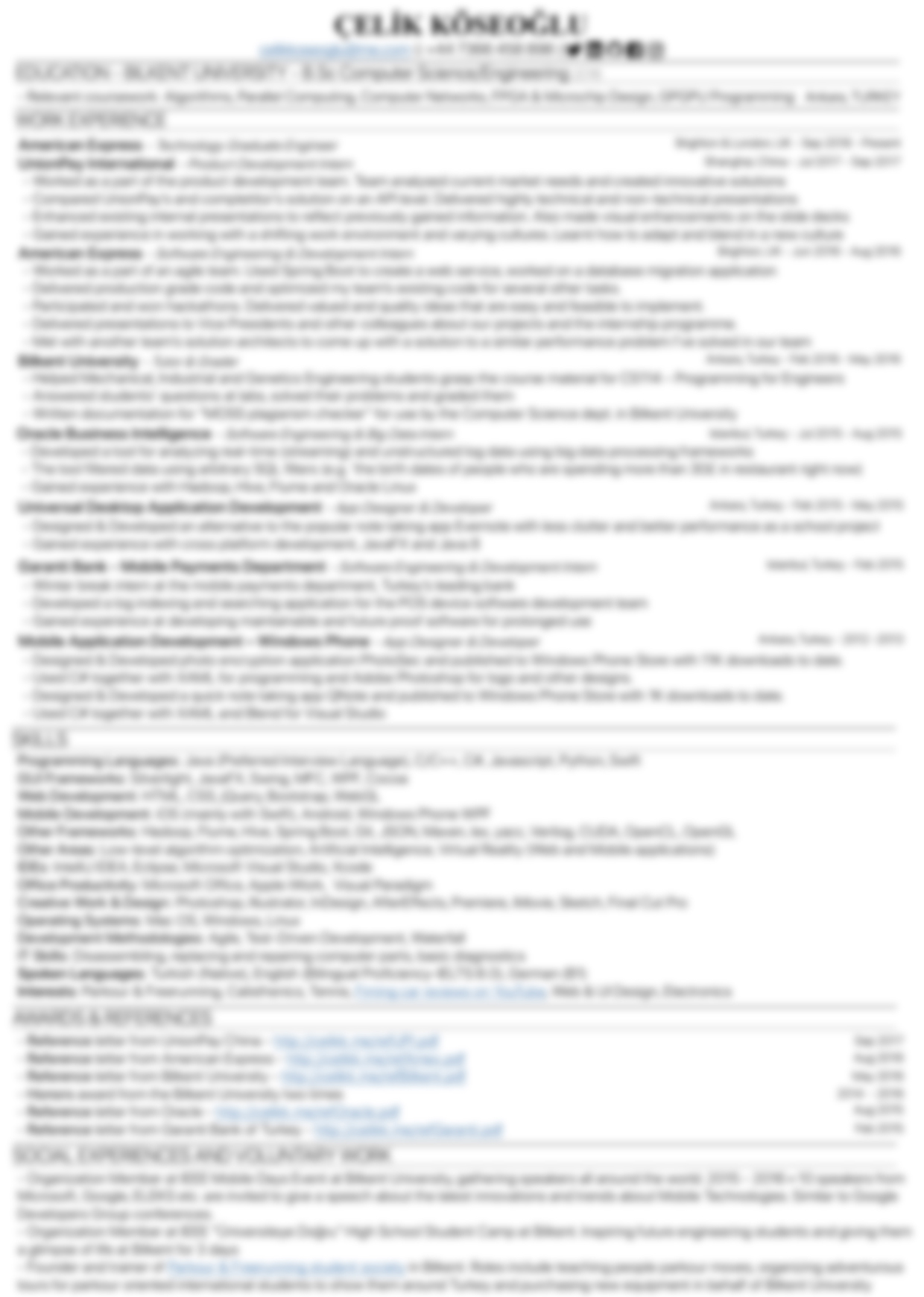
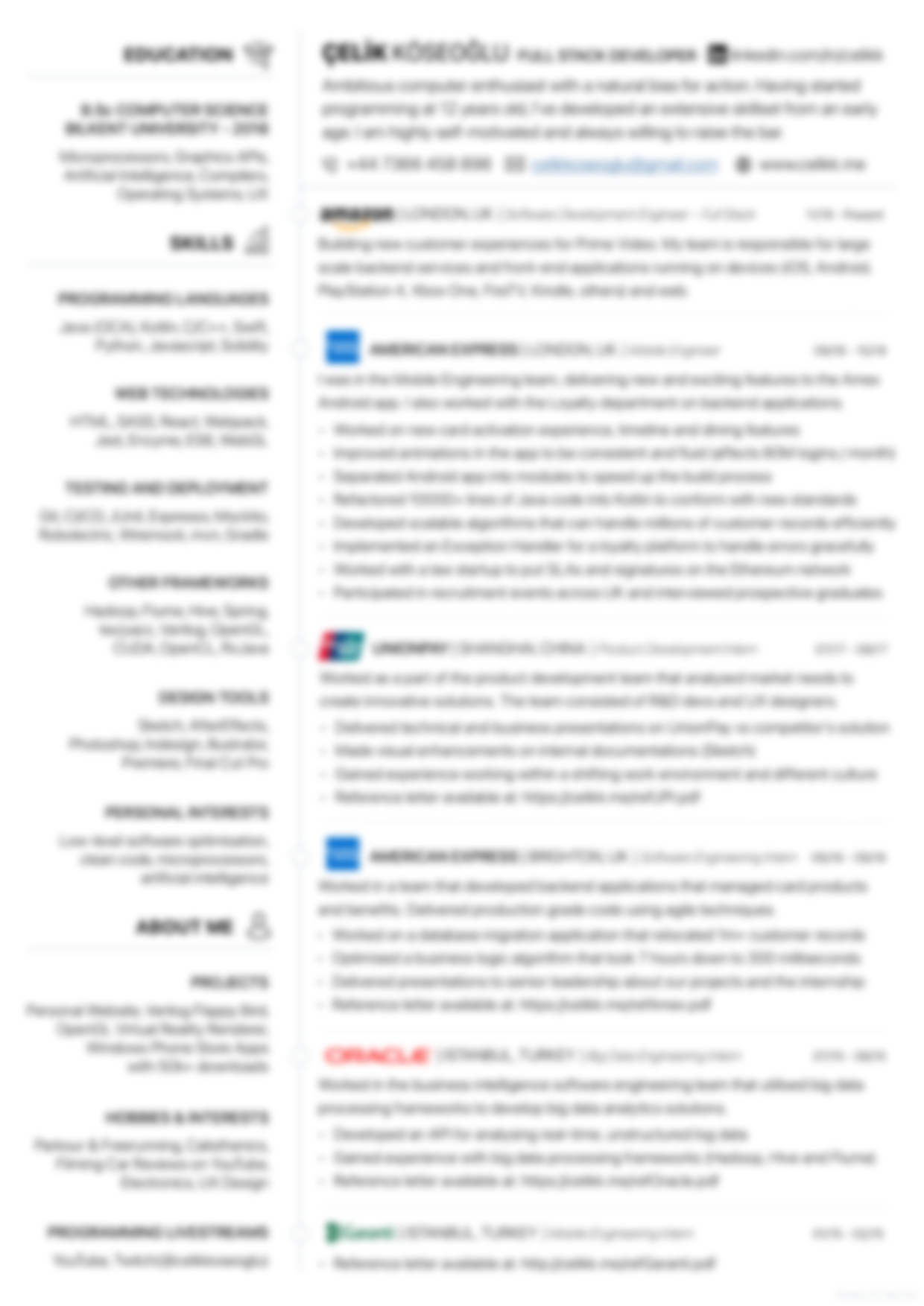
I've asked this question to several recruiters too. All of them picked the one on the right. If you're a recruiter and you prefer the one on the left, please get into contact with me. I'd like to have a chat and add your opinions on this post.
Here are the same CV's without the blur filter:
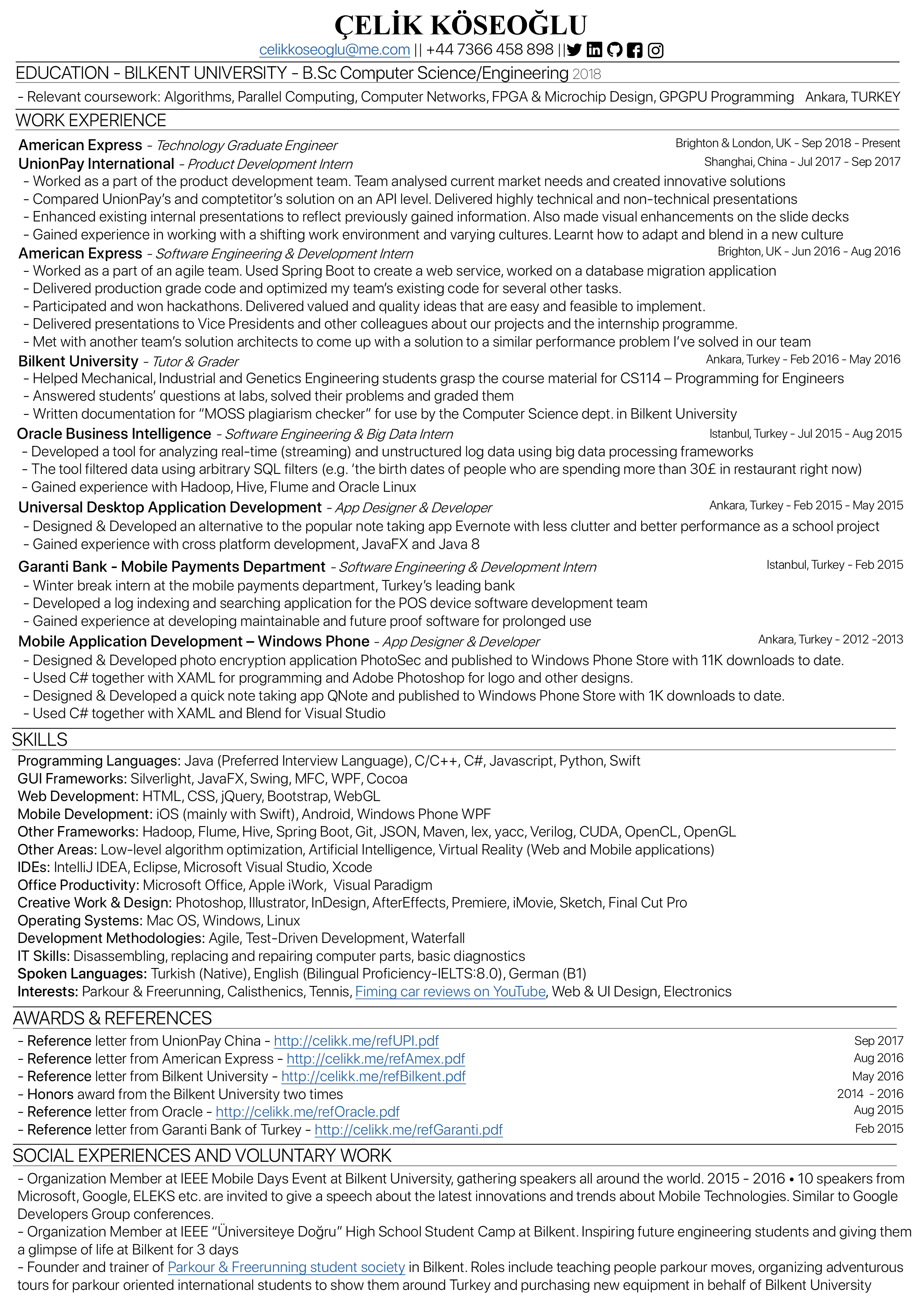

The one on the right looks modern, formatting is on point and I have the logos of the companies rather than their names written in text. In addition, there is less content and it's not a big wall of text anymore. One of the recruiters that I've spoken with went as far as saying they just bin the wall-of-text CVs.
2. Single Page CV
If you're an engineer with several years of experience, maybe it's time to remove your university projects from your CV. Or if you've jumped companies a lot, just list the company names and dates in a single line rather than listing a bunch of uninteresting things you've done.
Don't be afraid to remove job descriptions and other irrelevant information. Do not try to cram everything in a single page by reducing the font size or line spacing. Remember, this is a single page leaflet of yourself for the purpose of getting past a recruiter. Once you secure an on-site interview, your CV doesn't matter anymore. You can talk about your previous experiences during your on-site interview (if anyone asks).
Now relax, and let go of the weight of your past, clean everything you can.
3. Get to the point.
When the recruiter is reading your CV, they have to be impressed about what you've done so they don't immediately bin your CV. Don't be vague nor underestimate yourself. No need to be humble about your fascinating achievements.
I have 2 great examples to share:
Example 1:
Bad: Delivered production grade code and optimized my team’s existing code for several other tasks.
Good: Optimised a business logic algorithm that took 7 hours down to 300 milliseconds
Example 2:
Bad: Used Spring Boot to create a web service, worked on a database migration application
Good: Worked on a database migration application that relocated 1m+ customer records
The bad statement in both examples come from my old CV. The bad statement is vague and leaves the reader wondering "so what?". Good statement aims to clear up the confusion by backing up the argument by data.
Plus, tech recruiters know what a database is but most of them have no idea what Spring Boot does. Most recruiters are not technical so providing technical details is not going to help you get any further. Save your technical knowledge for the on-site interview.
4. Have a good personal statement at the top
People that I've spoken with deemed this to be an essential item on a CV. Try to limit it to 40-50 words. Don't be too aggressive. Here is my personal statement from my CV as of the time of writing this blog post:
Ambitious computer enthusiast with a natural bias for action. Having started programming at 12 years old, I’ve developed an extensive skillset from an early age. I am highly self-motivated and always willing to raise the bar.
5. Remove spoken languages
If you're a software engineer, then you probably know English and you're not going to be asked if you know any other language. If this is not the case, the job posting is going to let you know anyway.
As long you have intermediate English skills, then you'll probably get the engineering job. Recruiters do not care about your mother tongue and it can potentially be used to identify your country of origin (some companies come to the conclusion that they don't want to sponsor a visa before interviewing you because you're from the X part of the world).
6. Make sure you have one tech and one non-tech hobby listed
If your CV gets chosen, the recruiter will reach over by phone or email to talk about the next steps. Before the technical on-site interview, there will be an ice-breaker, face-to-face chat between you and your recruiter. The goal of this is to make you feel relaxed and decrease your anxiety. This is when they will ask you about your hobbies.
When you're talking with the recruiter, try to talk about the tech related hobby so you seem really deep into what you do. If you're talking with an engineer, try to briefly mention your tech related hobby and then skip to your non-technical (non-nerdy) hobby to show that you have a creative and human side.
Also consider asking for their hobbies to further break the ice. "Face-to-face communication skills" is an assessment criteria for some companies.
7. Don't use a picture!
I've tried putting a picture on my CV some time ago. When I asked about feedback about my CV, I instantly got "remove the picture". Recruiters and interviewers take special training to ignore personal attributes like gender, ethnicity, nationality and sexual preferences. Including a picture in your CV only wastes space. Here is a never before seen prototype of my CV with a picture:
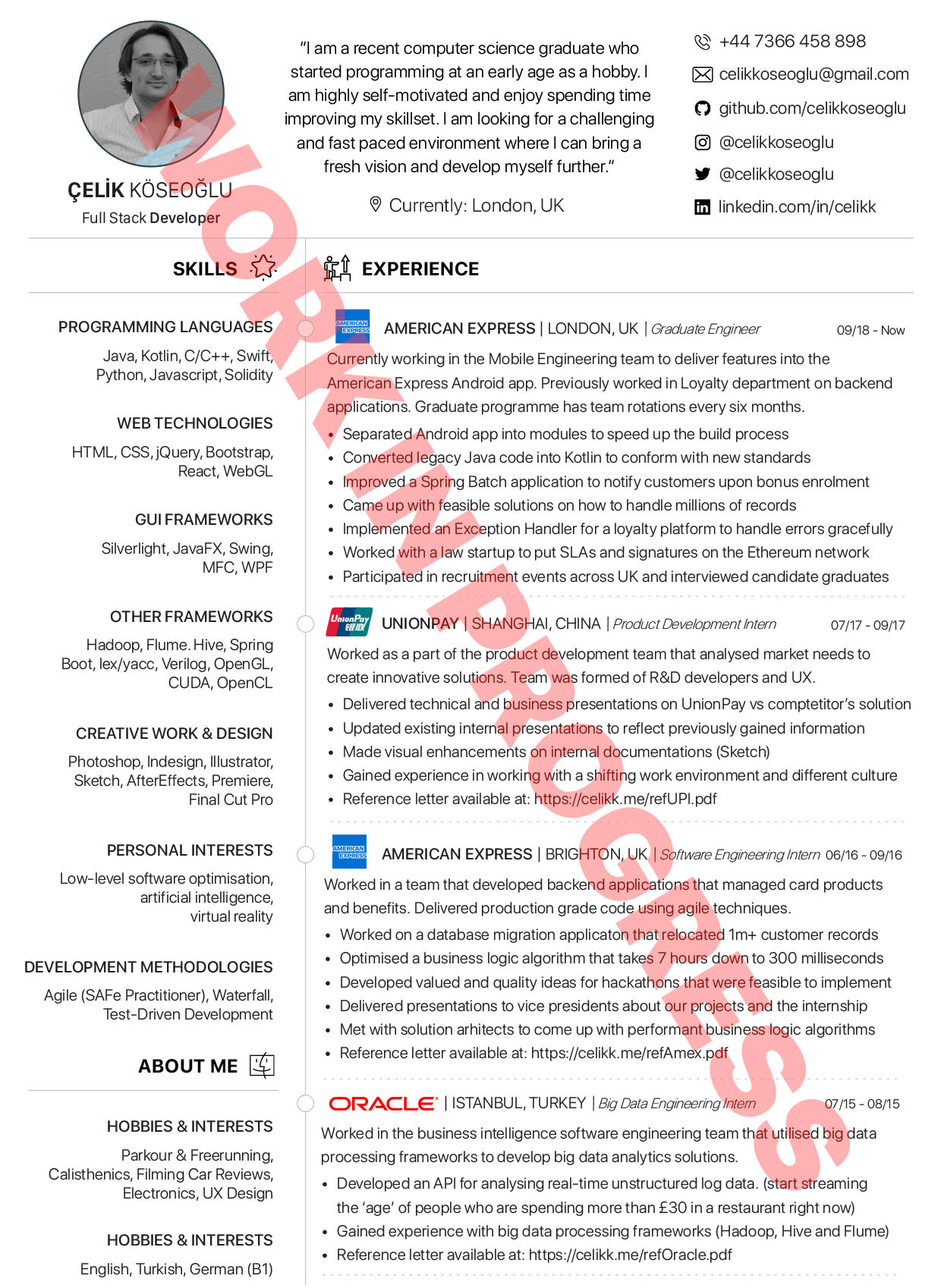
Some job applications still require you to disclose your gender, ethnicity and sexual preferences. I don't know how that data is used. I always choose prefer not to disclose if I get asked.
8. Allocate time and use the right tools
I did not create my CV in one day. This CV took one year to design and fill out properly. Here are some of the iterations over the year:
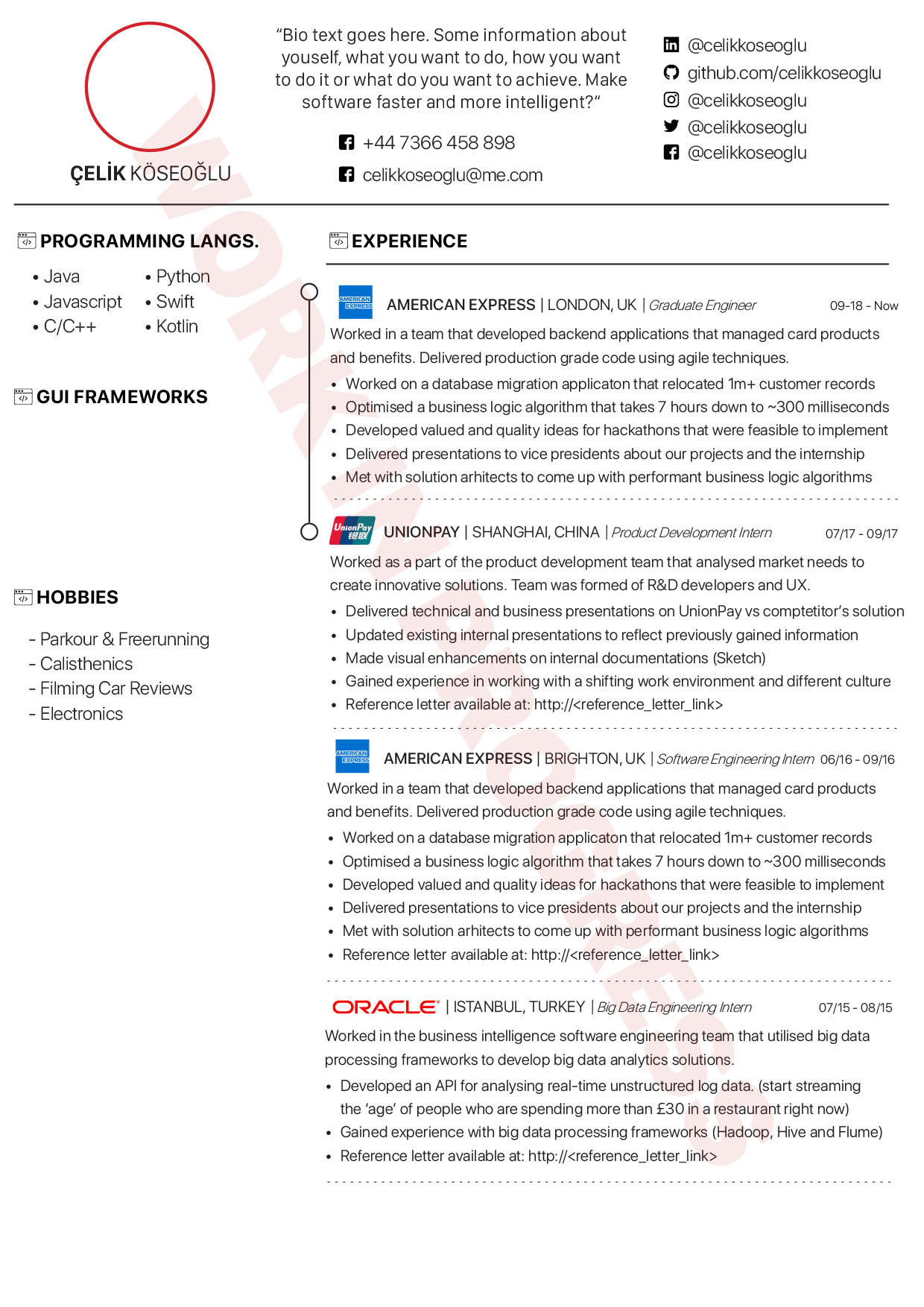
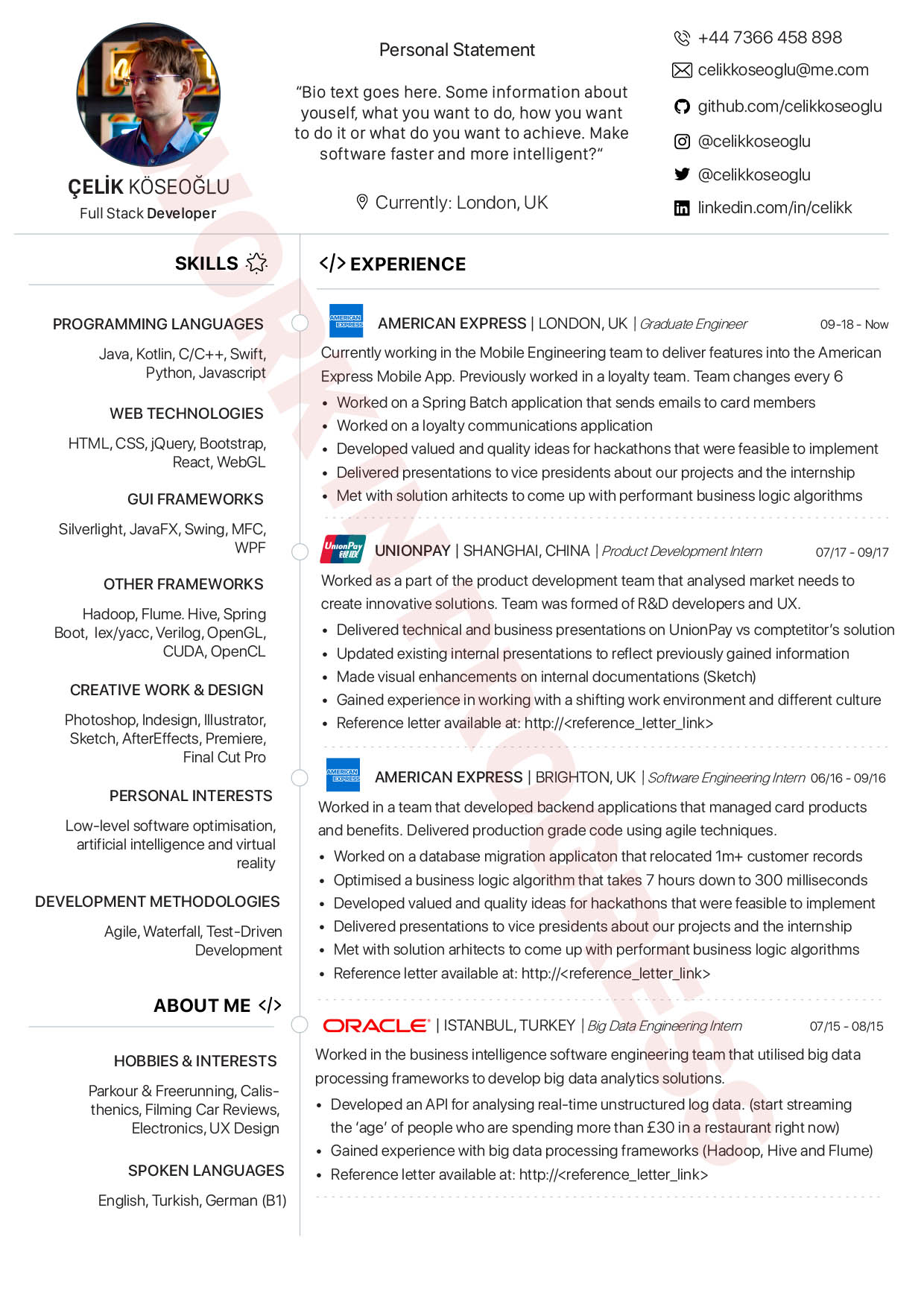


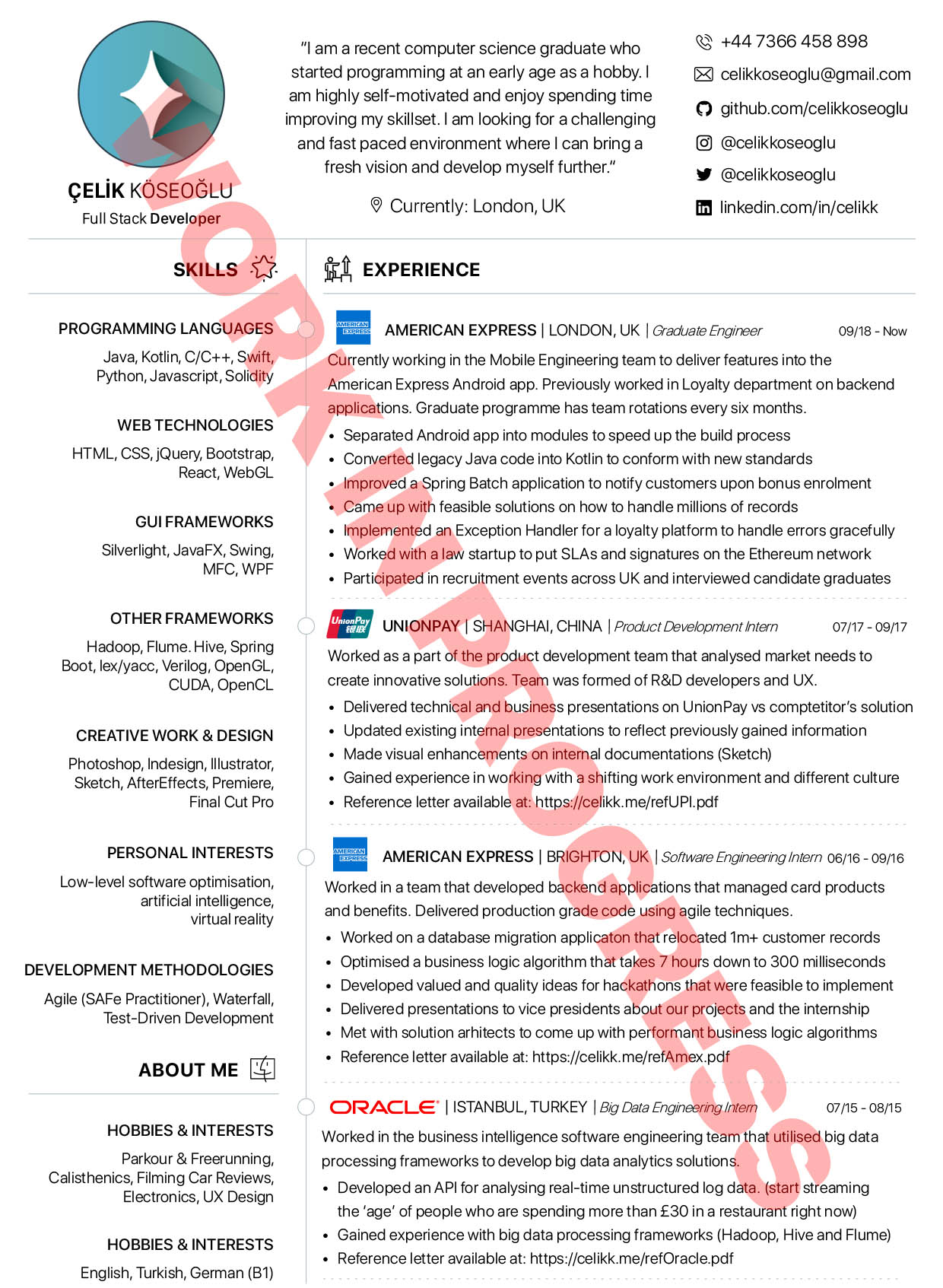

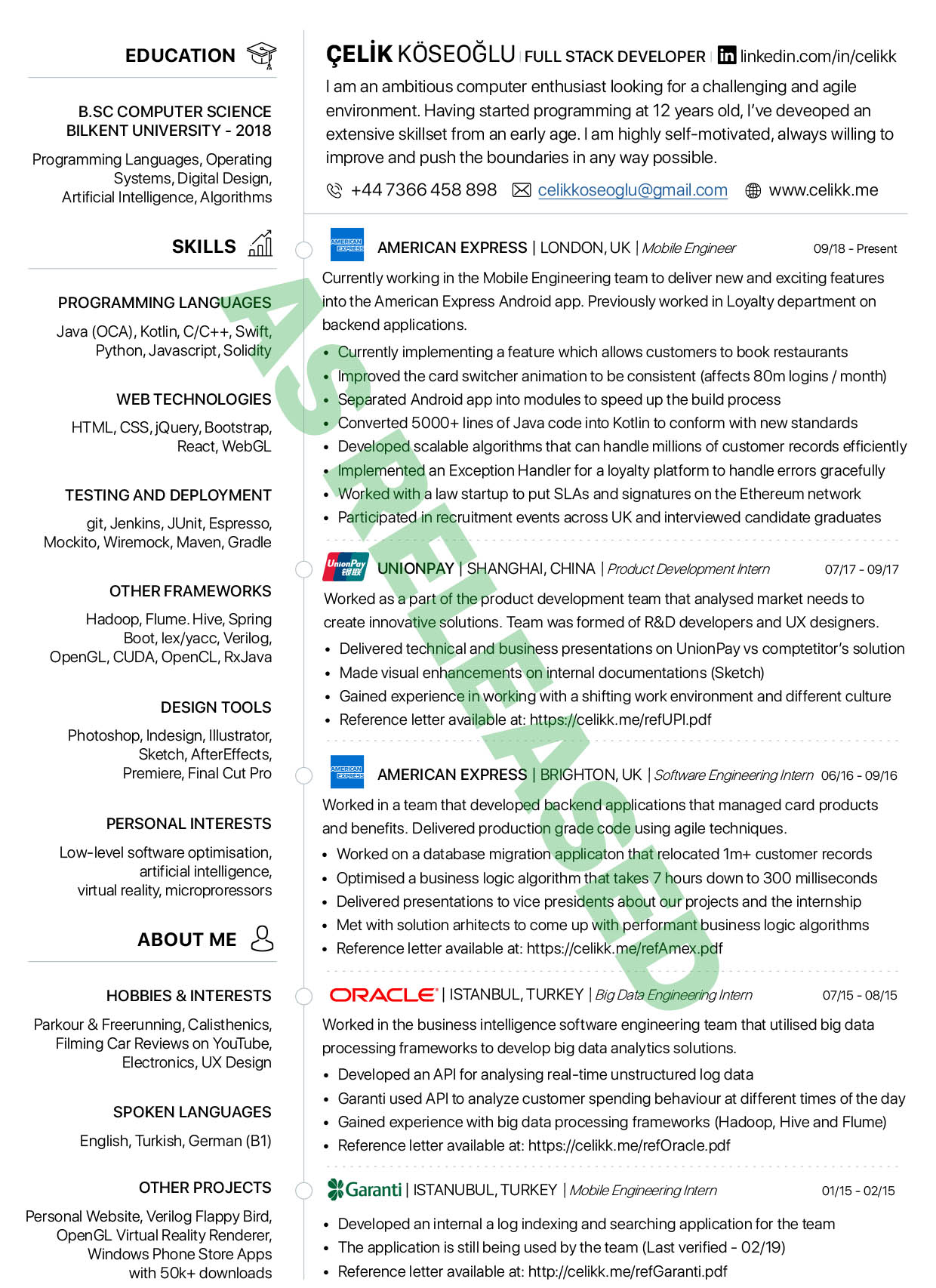

I've used Adobe InDesign to make it and it wasn't easy. Many people ask me where I got the template from. There is no template. It's 100% mine. It has taken me over one year to complete. Don't get frustrated if you can't finish it in a week.
9. Finish the "Cracking the Code Interview" Book
If you execute all of these steps correctly, then you're very likely to get invited for an on-site interview. You don't get many chances. Make sure you don't fail by not being able to solve a silly question like "write me a recursive fibonacci function". Trust me, it happens to the best of us when out of practise.
Moral of the story is:
Use your CV as an advertisement, not a biography.
You are as good as you market yourself.